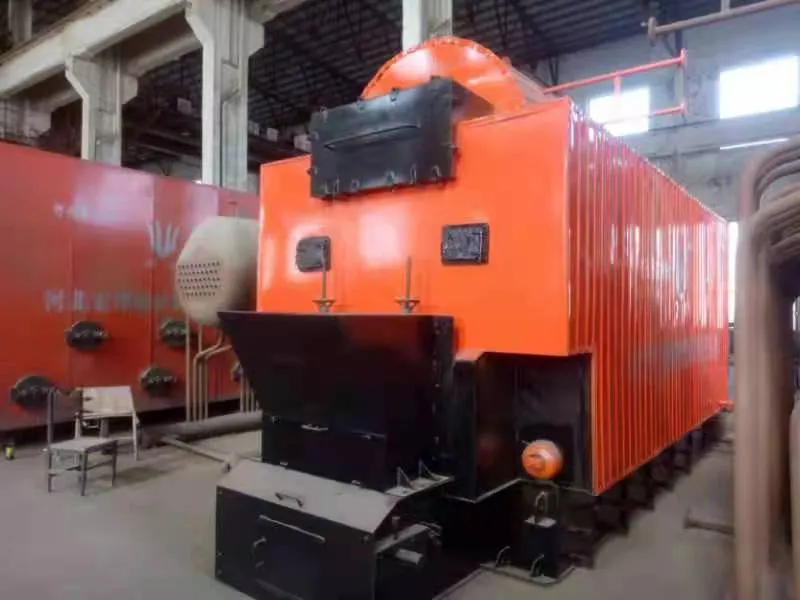
Feb . 04, 2025 03:07 Back to list
biomass fired steam boiler
Steam boilers serve as the heart of many industrial and commercial heating systems, delivering the high-pressure steam vital for energy production, manufacturing processes, and space heating. Yet, like any sophisticated energy system, steam boilers harbor potential risks if not managed with stringent safety measures. Ensuring their safe operation hinges on an array of meticulously engineered safety devices designed to avert accidents and costly downtimes. This article delves into the essential safety devices that enhance steam boiler operation, providing expert insights and authoritative guidance that bolster trust in these complex systems.
Over-temperature protection is yet another critical aspect of steam boiler safety assured through High Limit Temperature Controls. This device serves to prevent overheating, which could lead to material failures and potential breaches in the boiler structure. It monitors the temperature of the steam or water and shuts down the boiler if temperatures exceed safe thresholds. Trustworthy high limit temperature controls are characterized by reliable digital interfaces and fail-safe alarms that alert operators to potential hazards in real time. Additionally, modern steam boiler systems employ sophisticated Control and Monitoring Systems to unite various safety components into an integrated network. Such systems optimize the performance of safety valves, water indicators, flame detectors, and temperature controls, ensuring each device functions cohesively. Through automated reporting and diagnostics, these systems not only enhance safety but also improve efficiency, energy conservation, and predictive maintenance protocols, thus extending the lifespan of the boiler itself. Finally, no discussion of steam boiler safety is complete without acknowledging the importance of regular professional inspections and certifications. Engaging certified boiler inspectors and technicians for routine checks ensures compliance with safety regulations and addresses subtle wear issues before they escalate into serious problems. These experts leverage their authority and expertise to reassure stakeholders of both the safety and reliability of the boiler systems, fostering trust and adherence to best practices. In conclusion, the safe operation of steam boilers is inextricably linked to the effectiveness and maintenance of their safety devices. By prioritizing the diligent implementation and oversight of these components, businesses can safeguard their operations, protect their personnel, and ensure continuity in critical energy functions. Such meticulous attention not only upholds the highest standards of safety but also aligns with the principles of Expertise, Authoritativeness, and Trustworthiness, essential for both the longevity and integrity of boiler systems.


Over-temperature protection is yet another critical aspect of steam boiler safety assured through High Limit Temperature Controls. This device serves to prevent overheating, which could lead to material failures and potential breaches in the boiler structure. It monitors the temperature of the steam or water and shuts down the boiler if temperatures exceed safe thresholds. Trustworthy high limit temperature controls are characterized by reliable digital interfaces and fail-safe alarms that alert operators to potential hazards in real time. Additionally, modern steam boiler systems employ sophisticated Control and Monitoring Systems to unite various safety components into an integrated network. Such systems optimize the performance of safety valves, water indicators, flame detectors, and temperature controls, ensuring each device functions cohesively. Through automated reporting and diagnostics, these systems not only enhance safety but also improve efficiency, energy conservation, and predictive maintenance protocols, thus extending the lifespan of the boiler itself. Finally, no discussion of steam boiler safety is complete without acknowledging the importance of regular professional inspections and certifications. Engaging certified boiler inspectors and technicians for routine checks ensures compliance with safety regulations and addresses subtle wear issues before they escalate into serious problems. These experts leverage their authority and expertise to reassure stakeholders of both the safety and reliability of the boiler systems, fostering trust and adherence to best practices. In conclusion, the safe operation of steam boilers is inextricably linked to the effectiveness and maintenance of their safety devices. By prioritizing the diligent implementation and oversight of these components, businesses can safeguard their operations, protect their personnel, and ensure continuity in critical energy functions. Such meticulous attention not only upholds the highest standards of safety but also aligns with the principles of Expertise, Authoritativeness, and Trustworthiness, essential for both the longevity and integrity of boiler systems.
Share
Latest News
-
High-Efficiency Commercial Oil Fired Steam Boiler for Industry
NewsJul.30,2025
-
High-Efficiency Biomass Fired Thermal Oil Boiler Solutions
NewsJul.30,2025
-
High Efficiency Gas Fired Thermal Oil Boiler for Industrial Heating
NewsJul.29,2025
-
High-Efficiency Gas Fired Hot Water Boiler for Sale – Reliable & Affordable
NewsJul.29,2025
-
High Efficiency Biomass Fired Hot Water Boiler for Industrial and Commercial Use
NewsJul.29,2025
-
High-Efficiency Biomass Fired Hot Water Boiler for Industrial Use
NewsJul.28,2025
Related PRODUCTS
Copyright © 2025 HEBEI HONGZE BOILER MANUFACTURING CO., LTD. All Rights Reserved. Sitemap | Privacy Policy






















